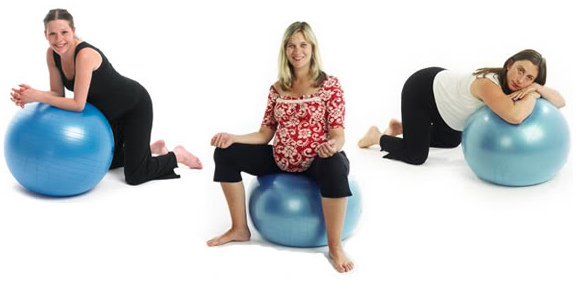Ask the Childbirth Educator: Braxton Hicks and Back Pain

What are ways to start labour (for later on)? Also how early can you get Braxton Hicks? Also is there any way to stop back pain? I’m 33 weeks pregnant and this heat and back pain is getting me down at the moment. Anything to help would be fantastic.
Tasha
Dear Tasha,
First of all, I know how miserable being heavily pregnant at the height of summer can be! I’ve been there (twice!). Hang in there – you’re almost at the end.
Your questions are really common experiences for women in late pregnancy and there are definitely lots of things you can do to help relieve the aches and pains of your third trimester.
Regarding your first question – Braxton Hicks contractions (sometimes called practice contractions) can start in the second trimester, but most women don’t start to feel them properly until into the third trimester. They should not be painful, nor should they have any regularity to them. If you do find that they start to intensify in feeling and become regular, then you should contact your health care provider straight away, as this could be a sign of preterm labour.
Many women, especially late in pregnancy, experience back pain. This is not surprising given how much additional weight a woman is carrying in her front at this point and that her centre of gravity has shifted. The lower back pain can also be a sign that your baby is in a posterior position – That means that your baby’s spine is lined up with your spine and during labour especially, this can cause a lot of lower back pain. Although as you are still only 33 weeks, I wouldn’t worry too much about that because your baby still has plenty of time to turn and move into an optimal position before going into labour.
There are lots of things you can do to relieve back pain in pregnancy. Maintaining good posture will go a long way to taking the pressure off your spine. Be sure to sit in a well-supported chair and try not to slouch in the sofa too much (as tempting as I know it can be!). If you are still working, especially if you are in an office job and sitting at a computer all day, be sure to do neck and shoulder rolls regularly and try to get up and walk around for a few minutes at least once an hour to improve your circulation.

Image source
You can also lean over the ball and roll forward to stretch out your lower back. Be sure to protect and cushion your knees though by placing them on a pillow or a mat.
Other exercises you can do are pelvic tilts. These help to strengthen your abdominal muscles, improve posture and relieve back pain. There are a few ways to do them, so feel free to try them out and see what is most comfortable and beneficial for you.
On a yoga mat, get on your hands and knees. Keep your back in a neutral position (neither sagging nor arched) and your knees hip-width apart. As you tighten your abdominal muscles, your pelvis curls under and your lower back arches. Your upper back may arch as well. This is really a variation on a yoga position, called “Cat Cow” and I found a good YouTube link on how to do it here.
You can also lean against a wall with knees slightly bent and feet apart and about 30cms away from the wall. Let your bottom and shoulders touch the wall. As you contract your abdominal muscles, your back presses against the wall.
At night when you are sleeping, make sure you are well supported. Many women like to have a pillow wedged behind their back and another one under their tummy or between their legs.
At night when you are sleeping, make sure you are well supported. Many women like to have a pillow wedged behind their back and another one under their tummy or between their legs.
Finally, when it comes to getting labour started, the most important thing to remember is, let labour begin on its own! All the latest research is showing that it is, in fact, the baby who determines when labour begins and not the mother’s body. So if baby is not ready, then pretty much nothing will work (short of a medical labour induction which will set you and the baby up for no shortage of potential risks). Watch this excellent video from Lamaze’s Healthy Birth Practices:
I hope these tips are useful!
All the best,
Tanya
Tanya Strusberg is a Lamaze Certified Childbirth Educator (LCCE) and teaches prenatal education to pregnant women and their partners in Melbourne.
She and her husband Doron have two beautiful children, Liev and Amalia.
To learn more visit www.birthwellbirthright.com
Facebook: https://www.facebook.com/birthwellbirthright
Disclaimer: The information contained in this column is of a general nature only and does not constitute formal medical advice. Any specific medical problem should be referred directly to a qualified health professional.










